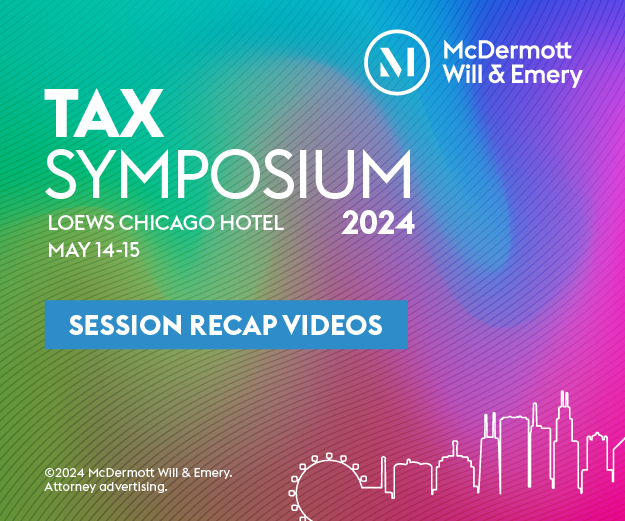Check out our summary of significant Internal Revenue Service (IRS) guidance and relevant tax matters for the week of April 29, 2024 – May 3, 2024.
April 29, 2024: The IRS released Internal Revenue Bulletin 2024-18, which includes the following:
- Notice 2024-33, which provides a limited waiver of the addition to tax under Section 6655 of the Internal Revenue Code (Code) to the extent the addition to tax would be attributable to an underpayment of estimated corporate alternative minimum tax under Section 55 due April 15, 2024.
- Notice 2024-34, which provides guidance on the corporate bond monthly yield curve, the corresponding spot segment rates used under Section 417(e)(3) of the Code, the 24-month average segment rates under Section 430(h)(2), the interest rate on 30-year Treasury securities under Section 417(e)(3)(A)(ii)(II) as in effect for plan years beginning before 2008, and the 30-year Treasury weighted average rate under Section 431(c)(6)(E)(ii)(I).
April 29, 2024: The IRS issued Notice 2024-36, which provides guidance on the procedures for allocating credits under Section 48C and announces a second round of credits under Section 48C(e) for participation in the Qualifying Advanced Energy Project Credit program.
April 29, 2024: The IRS reminded small businesses to take advantage of the many tax resources available to them through the Small Business and Self-Employed Tax Center on IRS.gov.
April 30, 2024: The IRS announced that it is accepting applications for Tax Counseling for the Elderly and Volunteer Income Tax Assistance grants, which allows eligible organizations to apply for annual funding to provide free federal tax return preparation assistance for up to three years.
April 30, 2024: The IRS issued Notice 2024-37, which provides additional guidance and safe harbors regarding sustainable aviation fuel credits under Sections 40B and 6426(k) of the Code.
May 1, 2024: The IRS warned taxpayers and tax professionals about common scams and schemes, including online account help from third-party scammers, phishing, unscrupulous tax return preparers, offer in compromise mills and employee retention credit scams.
May 1, 2024: The IRS encouraged entrepreneurs to put data security safeguards in place to protect their financial, personal and employee information from scams and cybercriminals.
May 1, 2024: The IRS reminded taxpayers that it provides relief when an emergency measures declaration is issued, supplementing governmental efforts to provide emergency services. The IRS also provides relief when a major disaster declaration offering “individual assistance” is issued, which allows individuals and households to apply to the Federal Emergency Management Agency for financial and direct services.
May 1, 2024: The IRS issued Revenue Procedure 2024-24, which outlines procedures for requesting private letter rulings involving “spin-off” transactions subject to Section 355. Notice 2024-38, issued in conjunction with Revenue Procedure 2024-24, requests feedback on these procedures.
May 1, 2024: The IRS reminded taxpayers to [...]
Continue Reading
read more

 Subscribe
Subscribe




